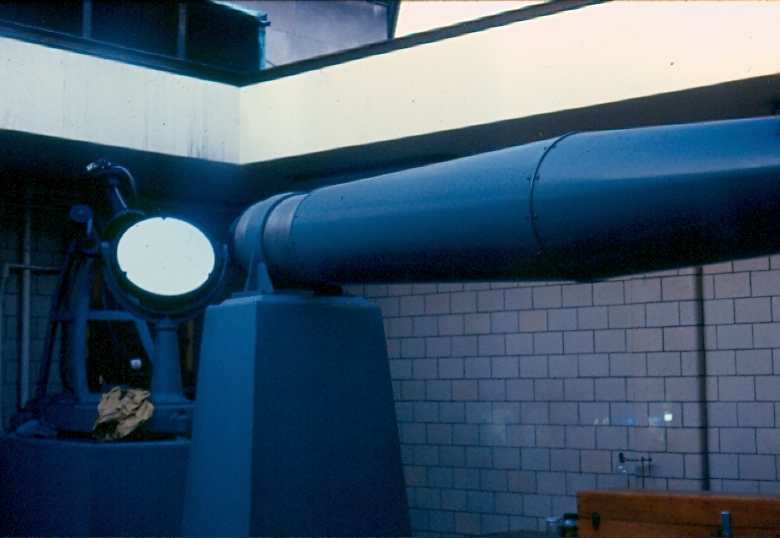
The BepiColombo Laser Altimeter which will help map the surface of Mercury.
(Image Source: University of Bern / Ramon Lehmann)
By Glenn A. Walsh
Reporting for SpaceWatchtower
To truly map the surface of Mercury, you need
a Laser Altimeter to add the third dimension, to the two dimensions
of photography. An advanced Laser Altimeter, to be launched to
Mercury on an European space probe in 2018, has just been delivered
to the European Space Agency (ESA).
Known as the BepiColombo Laser
Altimeter (BELA), it is for a joint European / Japanese space mission
to Mercury called BepiColombo. It is the first space-bound laser altimeter built
in Europe, developed by a Swiss-German-Spanish team led by the
University of Bern.
The BELA will add to the information
gathered a few years ago by the Mercury Laser Altimeter (MLA)
on-board NASA's Mercury Messenger space probe. As the first spacecraft to enter Mercury orbit in 2011, at the end of its mission it de-orbited and impacted Mercury last year.
The BepiColombo mission is scheduled to
launch in April of 2018 and is expected enter orbit around Mercury in
2024.
The close proximity of Mercury to the
Sun made it more difficult to construct a laser altimeter that is
reliable. Temperatures on the surface of a satellite orbiting Mercury
can reach as high as +290 degrees Fahrenheit / +200 degrees Celsius.
Hence, a sophisticated detection system must be included that can
handle such high temperatures, because the returning laser pulse from
the planet will consist of only a few hundred photons.
The huge power consumption of the
laser, in a very short time, was the largest technical hurdle they
had to resolve. Such huge power produces noise on the electrical
signals. They had to develop new technical solutions, exceeding the
requirements normally used for space instruments for grounding the
electronics.
The interest in the Planet Mercury, by
the University of Bern, is inspired by Albert Einstein, who was
appointed as a Professor of Theoretical Physics at the University in
1909. Dr. Einstein’s General Theory of Relativity, which observed
its centennial last year, demonstrated the true reason for the wobble
in Mercury's orbit, making an unseen Planet Vulcan tugging on Mercury
unnecessary.
Internet Links to Additional Information ---
"Bern-made laser altimeter taking off to Mercury.":
Link >>> http://www.unibe.ch/news/media_news/media_relations_e/media_releases/2016_e/media_releases_2016/bern_made_laser_altimeter_taking_off_to_mercury/index_eng.html
BepiColombo Space Mission: Link >>> https://en.wikipedia.org/wiki/BepiColombo
Mercury Messenger Space Mission: Link >>> https://en.wikipedia.org/wiki/MESSENGER
Related Blog Post ---
"Centennial: Einstein's General Theory of Relativity." 2015 Nov. 25.
Link >>> http://spacewatchtower.blogspot.com/2015/11/centennial-einsteins-general-theory-of.html
2016 Oct. 7.

2016: 75th Year of Pittsburgh's Buhl Planetarium Observatory
Link >>> http://spacewatchtower.blogspot.com/2016/01/astronomical-calendar-2016-january.html
Like This Post? - Please Share!
Want to receive SpaceWatchtower blog posts in your inbox ?
Send request to < spacewatchtower@planetarium.cc >.
gaw
Glenn A. Walsh, Project Director, Friends of the Zeiss: < http://buhlplanetarium.tripod.com/fotz/ >
& SpaceWatchtower Editor / Author: < http://buhlplanetarium2.tripod.com/weblog/spacewatchtower/gaw/ >
Electronic Mail - < gawalsh@planetarium.cc >
Astronomy Links: < http://buhlplanetarium.tripod.com/#astrolinks >
Science Links: < http://buhlplanetarium.tripod.com/#sciencelinks >
SpaceWatchtower Twitter News Feed: < https://twitter.com/spacewatchtower >
SpaceWatchtower Blog: < http://spacewatchtower.blogspot.com/ >
LibraryWatchtower Blog: < http://librarywatchtower.blogspot.com >
South Hills Backyard Astronomers Blog: < http://shbastronomers.blogspot.com/ >
Barnestormin Blog: Writing, Essays, Pgh. News, etc.: < http://www.barnestormin.blogspot.com/ >
Author of History Web Sites on the Internet --
* Buhl Planetarium, Pittsburgh:
< http://www.planetarium.
* Adler Planetarium, Chicago:
< http://adlerplanetarium.
* Astronomer, Educator, Optician John A. Brashear:
< http://johnbrashear.tripod.com >
* Andrew Carnegie & Carnegie Libraries:
< http://www.andrewcarnegie.
* Civil War Museum of Andrew Carnegie Free Library:
< http://garespypost.tripod.com >
* Duquesne Incline cable-car railway, Pittsburgh:
< http://inclinedplane.tripod.
* Public Transit:
< http://andrewcarnegie2.tripod.

2016: 75th Year of Pittsburgh's Buhl Planetarium Observatory
Link >>> http://spacewatchtower.blogspot.com/2016/01/astronomical-calendar-2016-january.html
Like This Post? - Please Share!
Want to receive SpaceWatchtower blog posts in your inbox ?
Send request to < spacewatchtower@planetarium.cc >.
gaw
Glenn A. Walsh, Project Director, Friends of the Zeiss: < http://buhlplanetarium.tripod.com/fotz/ >
& SpaceWatchtower Editor / Author: < http://buhlplanetarium2.tripod.com/weblog/spacewatchtower/gaw/ >
Electronic Mail - < gawalsh@planetarium.cc >
Astronomy Links: < http://buhlplanetarium.tripod.com/#astrolinks >
Science Links: < http://buhlplanetarium.tripod.com/#sciencelinks >
SpaceWatchtower Twitter News Feed: < https://twitter.com/spacewatchtower >
SpaceWatchtower Blog: < http://spacewatchtower.blogspot.com/ >
LibraryWatchtower Blog: < http://librarywatchtower.blogspot.com >
South Hills Backyard Astronomers Blog: < http://shbastronomers.blogspot.com/ >
Barnestormin Blog: Writing, Essays, Pgh. News, etc.: < http://www.barnestormin.blogspot.com/ >
Author of History Web Sites on the Internet --
* Buhl Planetarium, Pittsburgh:
< http://www.planetarium.
* Adler Planetarium, Chicago:
< http://adlerplanetarium.
* Astronomer, Educator, Optician John A. Brashear:
< http://johnbrashear.tripod.com >
* Andrew Carnegie & Carnegie Libraries:
< http://www.andrewcarnegie.
* Civil War Museum of Andrew Carnegie Free Library:
< http://garespypost.tripod.com >
* Duquesne Incline cable-car railway, Pittsburgh:
< http://inclinedplane.tripod.
* Public Transit:
< http://andrewcarnegie2.tripod.
No comments:
Post a Comment